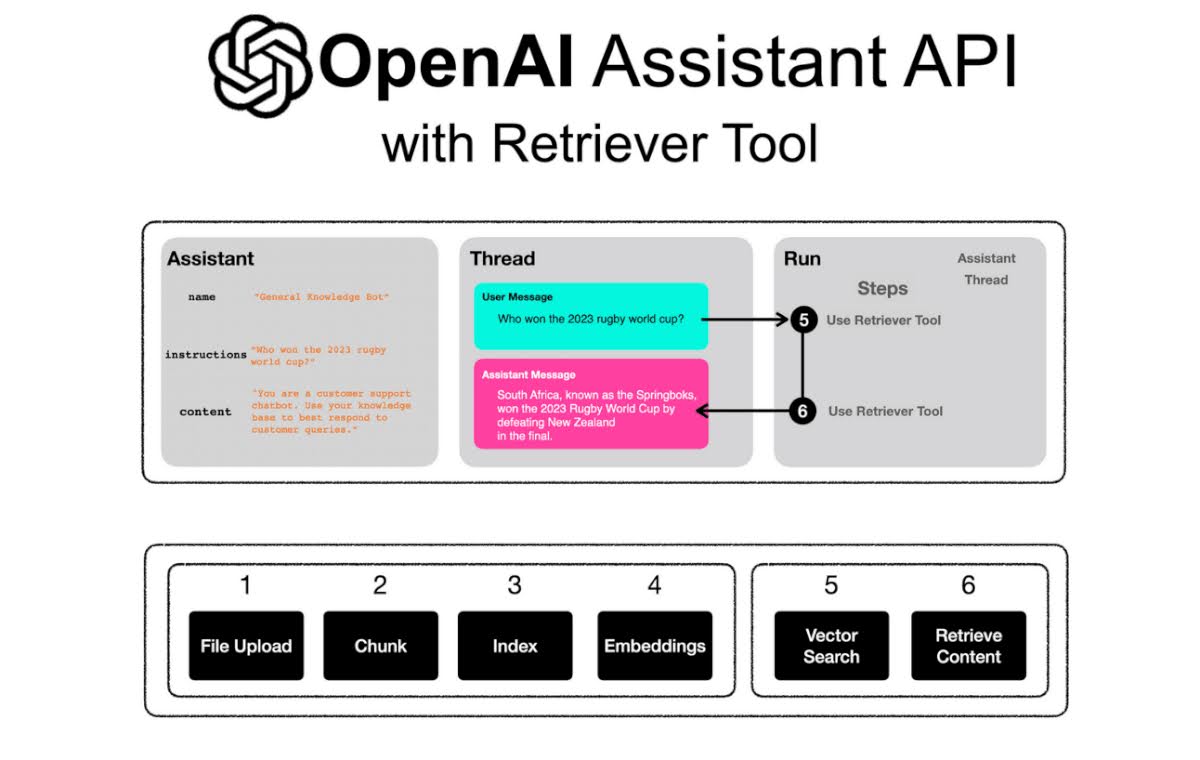OpenAI Simplifies Voice Assistant Development

Table of Contents
Developing sophisticated voice assistants used to be a complex, resource-intensive undertaking, requiring large teams of engineers and significant investment in infrastructure and data. However, OpenAI's groundbreaking advancements in artificial intelligence are dramatically simplifying the process, making it accessible to a wider range of developers and businesses. This article explores how OpenAI is revolutionizing voice assistant development, democratizing access to cutting-edge conversational AI technology.
Streamlined Natural Language Processing (NLP) with OpenAI
Pre-trained Models for Faster Development
OpenAI offers pre-trained models like GPT-3 and its specialized variants, significantly reducing the need for extensive training data and development time in building voice assistants. These models come with a wealth of knowledge already embedded, allowing developers to focus on application-specific fine-tuning rather than building from scratch.
- Reduced development costs: Leverage pre-trained models to minimize the expenses associated with data acquisition, model training, and expert personnel.
- Faster time to market: Bring your voice assistant to market quickly by using pre-trained models as a foundation, accelerating the entire development lifecycle.
- Improved accuracy out-of-the-box: Benefit from the high accuracy and robust performance of these models, requiring less effort in achieving optimal results.
For example, the OpenAI API allows developers to easily integrate GPT-3's powerful NLP capabilities into their voice assistant, handling tasks such as intent recognition, entity extraction, and response generation with minimal code. This significantly simplifies the development of complex conversational flows.
Enhanced Intent Recognition and Dialogue Management
OpenAI's technology goes beyond simple keyword matching. It excels at understanding the nuanced meaning behind user utterances, enabling more natural and engaging conversations. Its advanced algorithms grasp context, allowing for more sophisticated dialogue management and personalized responses.
- Improved context understanding: Maintain context across multiple turns in a conversation, ensuring a more coherent and natural interaction.
- More nuanced responses: Generate responses that are tailored to the user's specific needs and the context of the conversation.
- Better handling of complex queries: Effectively manage and resolve complex or ambiguous user requests, providing accurate and helpful information.
Imagine a voice assistant that not only understands the user's request to "play music from the 80s" but also understands the context of a previous conversation about a specific artist. OpenAI's models facilitate this level of contextual awareness, making interactions far more intuitive and satisfying. This can be achieved using techniques like embedding previous conversation turns into the current request's prompt.
Advanced Speech Recognition with OpenAI's Whisper
High-Accuracy Speech-to-Text Conversion
Whisper, OpenAI's open-source speech-to-text model, offers robust and accurate transcription, a crucial component of any voice assistant. Its ability to handle various accents, dialects, and noise levels makes it exceptionally versatile.
- Support for multiple languages: Expand your voice assistant's reach to a global audience by leveraging Whisper's multilingual capabilities.
- Reduced error rates: Benefit from significantly lower error rates compared to traditional speech recognition engines, ensuring accurate interpretation of user input.
- Improved noise cancellation: Maintain high accuracy even in noisy environments, enabling reliable performance in diverse settings.
Compared to other speech recognition engines, Whisper often demonstrates superior accuracy, particularly in challenging audio conditions. This translates to a more reliable and frustration-free user experience.
Seamless Integration into Voice Assistant Pipelines
Integrating Whisper into your voice assistant is remarkably straightforward thanks to OpenAI's well-documented APIs and libraries. Its compatibility with popular programming languages like Python simplifies the integration process.
- Simple API access: Access Whisper's functionality easily through intuitive APIs, minimizing development effort.
- Well-documented libraries: Benefit from comprehensive documentation and readily available libraries to simplify integration and troubleshooting.
- Compatibility with various programming languages: Integrate Whisper seamlessly into your existing voice assistant architecture, regardless of your preferred programming language.
You can find comprehensive documentation and code examples on the official OpenAI website to facilitate the integration of Whisper into your projects.
Faster Prototyping and Easier Deployment
Simplified Development Workflow
OpenAI's tools significantly streamline the development process, from initial concept to final deployment. This allows for faster iteration cycles and reduced development time, ultimately accelerating the time to market.
- Reduced coding complexity: Utilize pre-built models and APIs to minimize the amount of custom code required.
- Faster iteration cycles: Quickly test and refine your voice assistant's functionality with minimal overhead.
- Easier testing and debugging: Benefit from streamlined debugging processes and readily available tools for testing and evaluation.
A typical development workflow might involve using the OpenAI API to handle NLP tasks, integrating Whisper for speech recognition, and using a simple framework for managing the overall dialogue flow. This modular approach simplifies the development process considerably.
Cost-Effective Solutions for Voice Assistant Development
OpenAI's pay-as-you-go pricing model and scalable infrastructure offer a cost-effective alternative to building a voice assistant from scratch. This makes advanced AI capabilities accessible to even small businesses and independent developers.
- Pay-as-you-go pricing models: Only pay for the resources you consume, optimizing your development budget.
- Reduced infrastructure costs: Eliminate the need for expensive server infrastructure and maintenance.
- Scalable solutions: Easily scale your voice assistant's capabilities to meet growing demands.
By leveraging OpenAI's services, you can significantly reduce the overall cost of voice assistant development, making it a more financially viable option for a broader range of projects.
Conclusion
OpenAI is transforming the landscape of voice assistant development by providing developers with powerful, accessible, and cost-effective tools. From streamlined NLP and advanced speech recognition to simplified prototyping and deployment, OpenAI is lowering the barrier to entry for creating innovative and engaging conversational AI experiences. The combination of pre-trained models, robust APIs, and a simplified workflow empowers developers to build sophisticated voice assistants faster and more efficiently than ever before.
Call to Action: Ready to simplify your voice assistant development? Explore OpenAI's powerful APIs and start building your next-generation voice assistant today! Learn more about how OpenAI is simplifying voice assistant development and unlock the potential of conversational AI.

Featured Posts
-
 The Company That Laid You Off Wants You Back What To Say
Apr 26, 2025
The Company That Laid You Off Wants You Back What To Say
Apr 26, 2025 -
 Exclusive Access A Business Model For Investing In Elon Musks Private Companies
Apr 26, 2025
Exclusive Access A Business Model For Investing In Elon Musks Private Companies
Apr 26, 2025 -
 A Timeline Of Karen Reads Murder Trials
Apr 26, 2025
A Timeline Of Karen Reads Murder Trials
Apr 26, 2025 -
 The Trump Tariff Impact Ceo Warnings And Consumer Sentiment
Apr 26, 2025
The Trump Tariff Impact Ceo Warnings And Consumer Sentiment
Apr 26, 2025 -
 Economic Uncertainty Trumps Impact On The Next Fed Chairs Agenda
Apr 26, 2025
Economic Uncertainty Trumps Impact On The Next Fed Chairs Agenda
Apr 26, 2025
